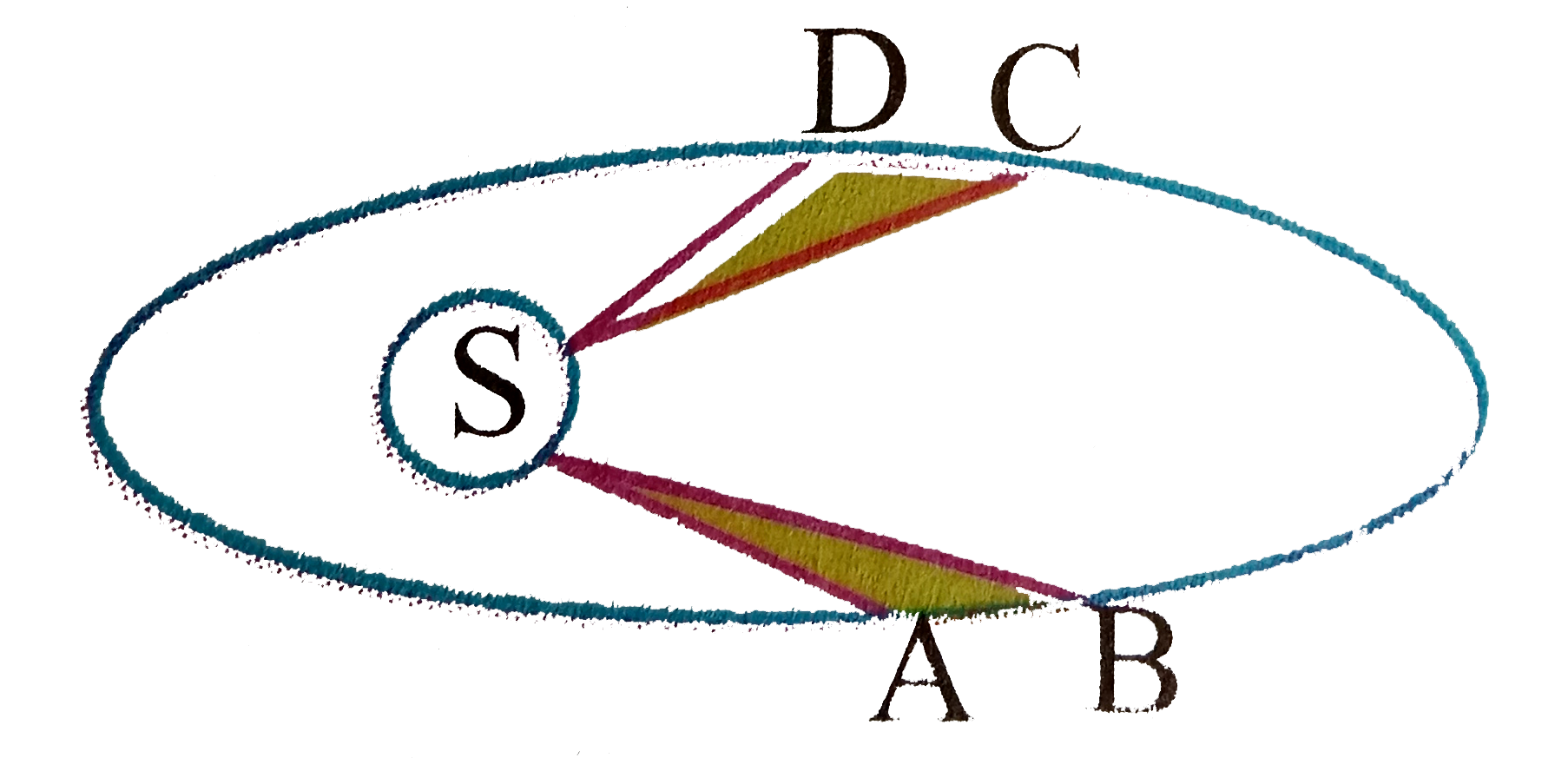A planet moves around the sun. at a given point P, it is closest from the sun at a distance d1, and has a speed V1. At another point Q, when it is farthest from the sun at a distance d2, its speed will be
d21V1d2
d2V1d1
d1V1d2
d22V1d21
The correct Answer is:C
To solve the problem, we can use the principle of conservation of angular momentum. The angular momentum of a planet moving in an elliptical orbit around the sun is conserved.
1. Understanding the Problem:
- At point P (closest to the sun), the distance from the sun is d1 and the speed is V1.
- At point Q (farthest from the sun), the distance from the sun is d2 and we need to find the speed V2.
2. Conservation of Angular Momentum:
- The angular momentum L of the planet at any point in its orbit is given by:
L=m⋅v⋅r
- Here, m is the mass of the planet, v is its speed, and r is the distance from the sun.
3. Setting Up the Equation:
- At point P:
LP=m⋅V1⋅d1
- At point Q:
LQ=m⋅V2⋅d2
- Since angular momentum is conserved, we have:
LP=LQ
- Therefore:
m⋅V1⋅d1=m⋅V2⋅d2
4. Cancelling the Mass:
- Since the mass m is the same for both points, we can cancel it out:
V1⋅d1=V2⋅d2
5. Solving for V2:
- Rearranging the equation gives:
V2=V1⋅d1d2
Final Answer:
The speed of the planet at point Q (farthest from the sun) is given by:
V2=V1⋅d1d2
- At point P (closest to the sun), the distance from the sun is d1 and the speed is V1.
- At point Q (farthest from the sun), the distance from the sun is d2 and we need to find the speed V2.
- The angular momentum L of the planet at any point in its orbit is given by:
L=m⋅v⋅r
- Here, m is the mass of the planet, v is its speed, and r is the distance from the sun.
- At point P:
LP=m⋅V1⋅d1
- At point Q:
LQ=m⋅V2⋅d2
- Since angular momentum is conserved, we have:
LP=LQ
- Therefore:
m⋅V1⋅d1=m⋅V2⋅d2
- Since the mass m is the same for both points, we can cancel it out:
V1⋅d1=V2⋅d2
- Rearranging the equation gives:
V2=V1⋅d1d2
The speed of the planet at point Q (farthest from the sun) is given by:
V2=V1⋅d1d2
Topper's Solved these Questions
- BOOK - NARAYNACHAPTER - GRAVITATIONEXERCISE - LEVEL III44videos
GRAVITATION
- BOOK - NARAYNACHAPTER - GRAVITATIONEXERCISE - NCERT BASED QUESTIONS26videos
GRAVITATION
- BOOK - NARAYNACHAPTER - GRAVITATIONEXERCISE - LEVEL I(C.W.)51videos
GRAVITATION
- BOOK - NARAYNACHAPTER - FRICTIONEXERCISE - Passage type of questions I6videos
FRICTION
- BOOK - NARAYNACHAPTER - KINETIC THEORY OF GASESEXERCISE - LEVEL-III(C.W)52videos
KINETIC THEORY OF GASES
Similar Questions
A planet moves around the sun in an elliptical orbit. When earth is closest from the sun, it is at a distance r having a speed v. When it is at a distance 4r from the sun its speed will be:
View SolutionA comet revolves around the sun in an eliptical orbit. When it is closest to the sun at a distance d, its corresponding kinetic energy is k0. If it is farthest from the sun at distance 3d then the corresponding kinetic energy will be
View Solution
Knowledge Check
- Question 1 - Select One
A planet moves around the sun. At a given point P, it is closest from the sun at a distance d1 and has a speed v1. At another point Q, when it is farther from the sun at a distance d2, its speed will be
Ad21d22v1Bd2d1v1Cd22d21v1Dd1v1d2 - Question 2 - Select One
A planet moves around the sun. It is closest to sun to sun at a distance d1 and have velocity v1 At farthest distance d2 its speed will be
Ad21v1d22Bd2v1d1Cd1v1d2Dd22v1d21 - Question 3 - Select One
On 4th July, the earth is farthest from sun. What is its distance?
A152 million kmB147 million kmC148 million kmD198 million km
The earth revolves around the sun in an elliptical orbit. It has a speed v1 when it is at the minimum distance d1 from the sun. When it is at the maximum distance d2 from the sun, its speed is
View SolutionA planet moves aruond the sun in an elliptical orbit such that its kinetic energy is K1 and K2 when it is nearest to the sun and farthest from the sun respectively. The smallest distance and the largest distance between the planet and the sun are r1 and r2 respectively.
View SolutionThe motion of a planet around sun in an elliptical orbit is shown in the following figure. Sun is situated at one focus. The shaded areas are equal. If the planet takes time t1 and l2 in moving from A to B and from C to D respectively, then
 View Solution
View SolutionA planet is revolving around the Sun in an elliptical orbit. Its closest distance from the Sun is r and farthest distance is R. If the orbital velocity of the planet closest to the Sun is v, then what is the velocity at the farthest point?
View SolutionThe motion of a planet around sun in an elliptical orbit is shown in the following figure. Sun is situated at one focus. The shaded areas are equal. If the planet takes time t1 and l2 in moving from A to B and from C to D respectively, then
 View Solution
View Solution

